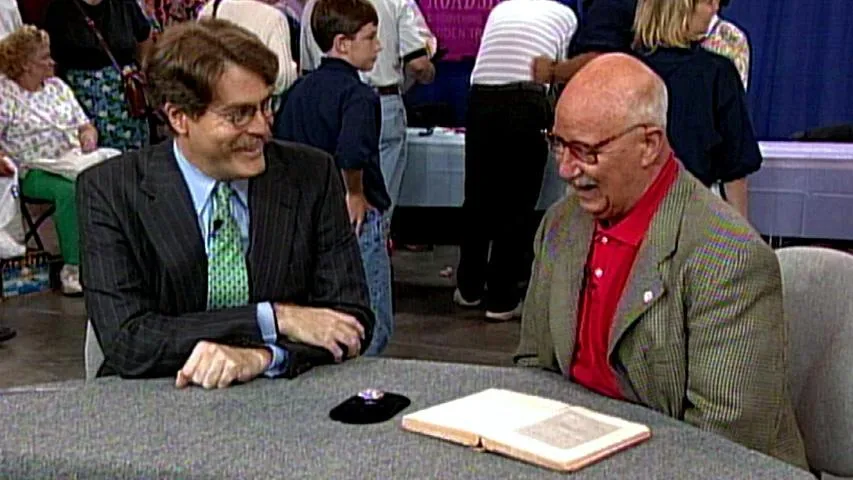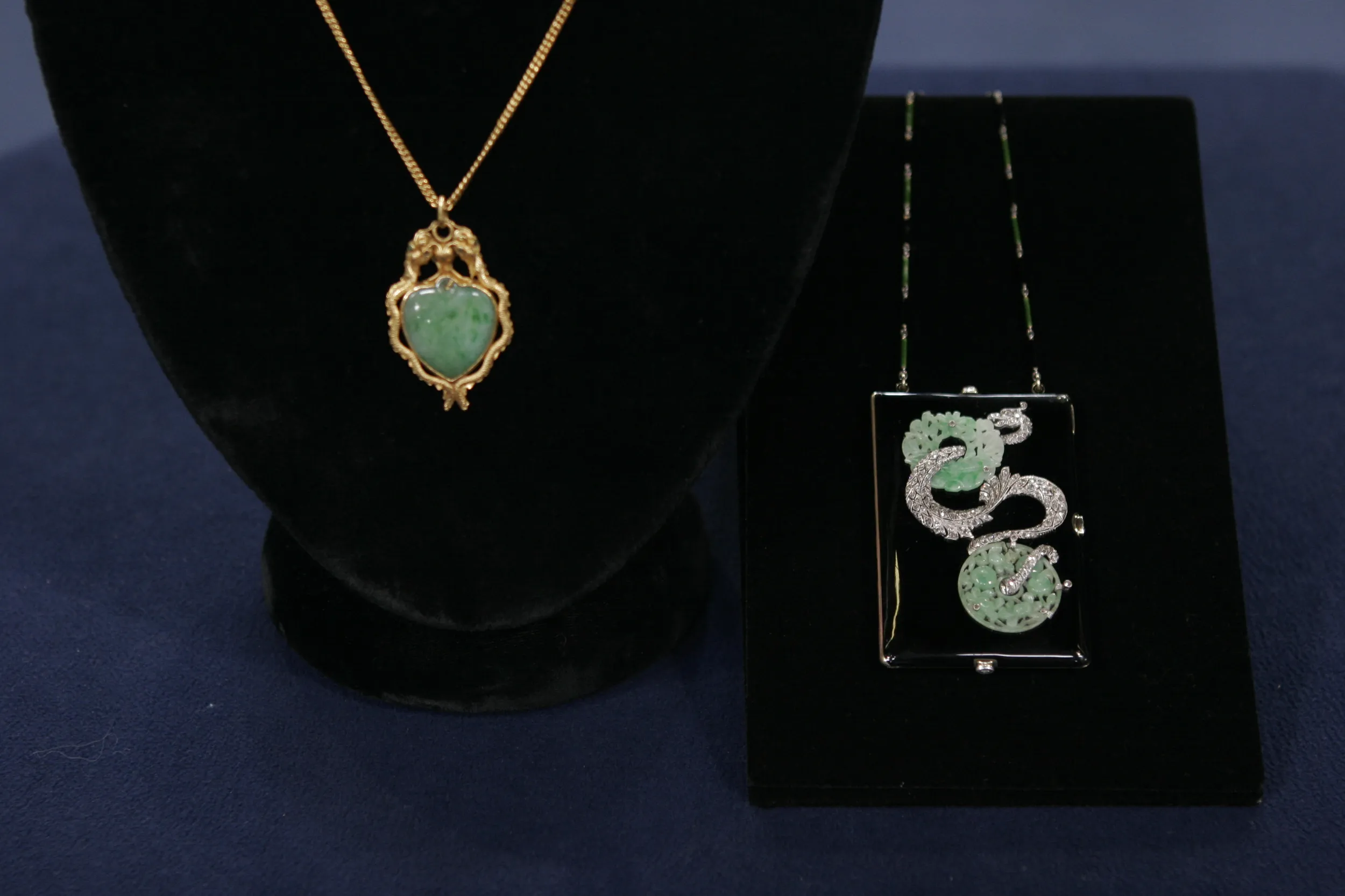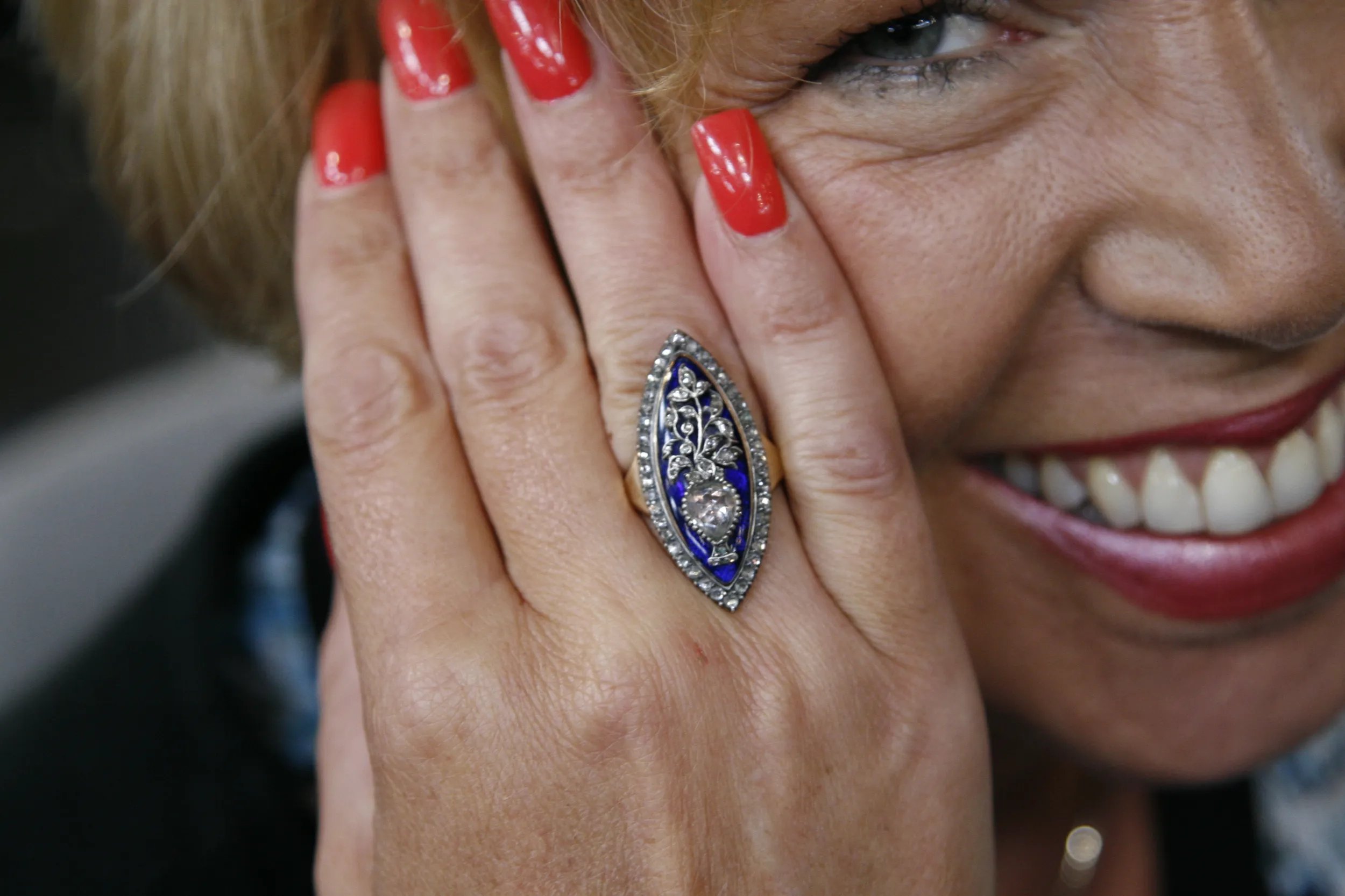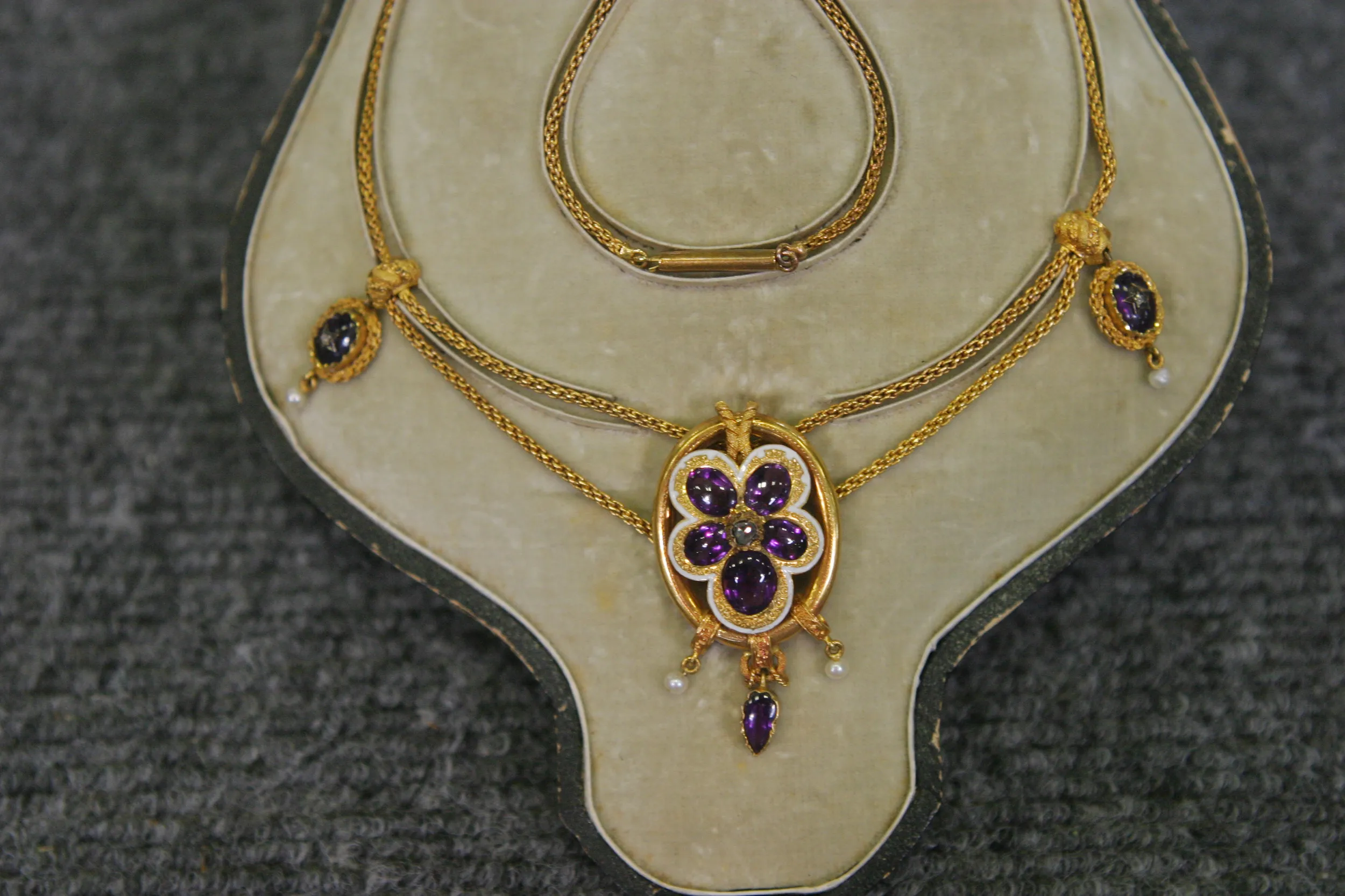GUEST: My aunt was a very famous Hungarian opera star. Well, she was very popular and she had one very special boyfriend. When the war broke out, she ended up in the concentration camps, but he was able to hide a lot of gold, and with that gold he forged papers and was able to avoid the concentration camps. But when the war ended, they reunited and they ended up in Italy. They couldn't work in Italy because they couldn't get working papers, but being that she was a singer and he played the violin, they illegally sang in the streets and people would throw them money--they accumulated money, but we never knew that--and they went and they bought this piece at a museum auction.
APPRAISER: Well, let me tell you a little bit about this extraordinary bracelet. This is an Italian bracelet made by Marchesini, and it was made around 1870, magnificently crafted. It's in the archaeological style, and you can see the beautiful detail, the pyramid-cut lapis, the wonderful filigree and granulation, which was typical of the archaeological style. When we open it up, we see the maker's mark inside: Marchesini, Firenze and Rome. The whole piece is a prime example of Italian archaeological jewelry. Do you have any idea, Burt, given the wonderful story that you've told us, how much this bracelet is worth today?
GUEST: I do know that they knew jewelry and when they bought it they must have known what they were buying, that it was a quality piece.
APPRAISER: Well, what would you say if I told you that it was worth between $8,000 and $10,000?
GUEST: I would be very happy to know that.
APPRAISER: Well, with that story, it warrants it.
GUEST: Thank you very much.
APPRAISER: You’re welcome.











